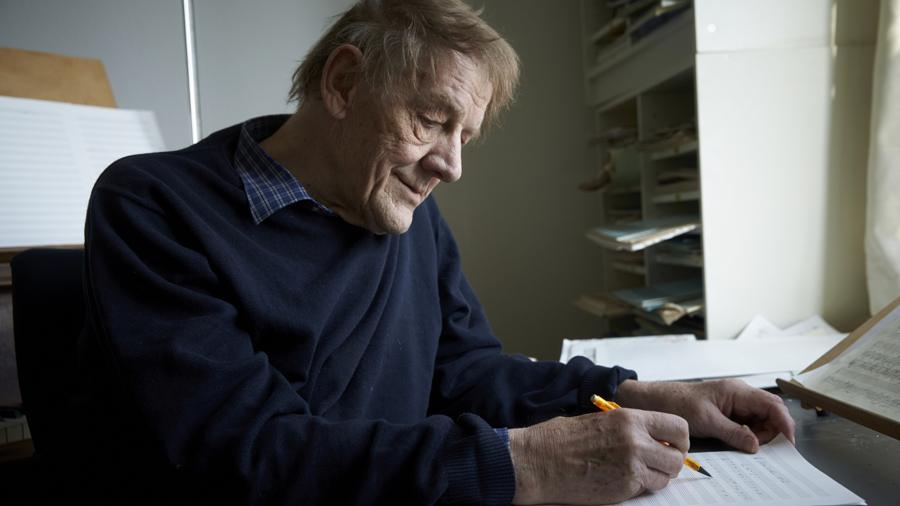Per Nørgård, who was widely regarded as the most prominent Danish composer since Nielsen, passed away last Wednesday, May 28 in Copenhagen. He was 92.
Nørgård left behind a catalogue of music which includes eight symphonies, six operas, and numerous chamber and concertante works. He said that his music resides within “the universe of the Nordic mind.” In his youth, he corresponded with Jean Sibelius.
Beginning in the 1960s, Nørgård developed a serial technique known as the infinity series. Based on fractal geometry, the system, which permeates many of Nørgård’s works, results in a sense of cosmic unity.
The infinity series brings order to Per Nørgård’s Symphony No. 3, completed in 1975. Set in two large sections, it unfolds as a vast, majestic Scandinavian soundscape, reminiscent of the music of Sibelius. Structurally, the Symphony is tied to the Harmonic Series and the Fibonacci Sequence. But this is music to be experienced rather than analyzed. In the second movement, voices enter gradually and swell to form a celestial chorale. Afro-Cuban dance rhythms, and a quote from Schubert’s Dubist die Ruh, emerge and vanish in what one commentator described as “new, fantastical, pleasurable, sometimes colliding wonder world of sound.”
This recording features the Danish National Symphony Orchestra, Radio Choir and Vocal Ensemble, conducted by Thomas Dausgaard:
Recordings
- Nørgård: Symphony No. 3, Thomas Dausgaard, Danish National Symphony Orchestra, Radio Choir and Vocal Ensemble Naxos
Featured Image: photograph by Lars Skaaning

